selected works
more images coming soon…






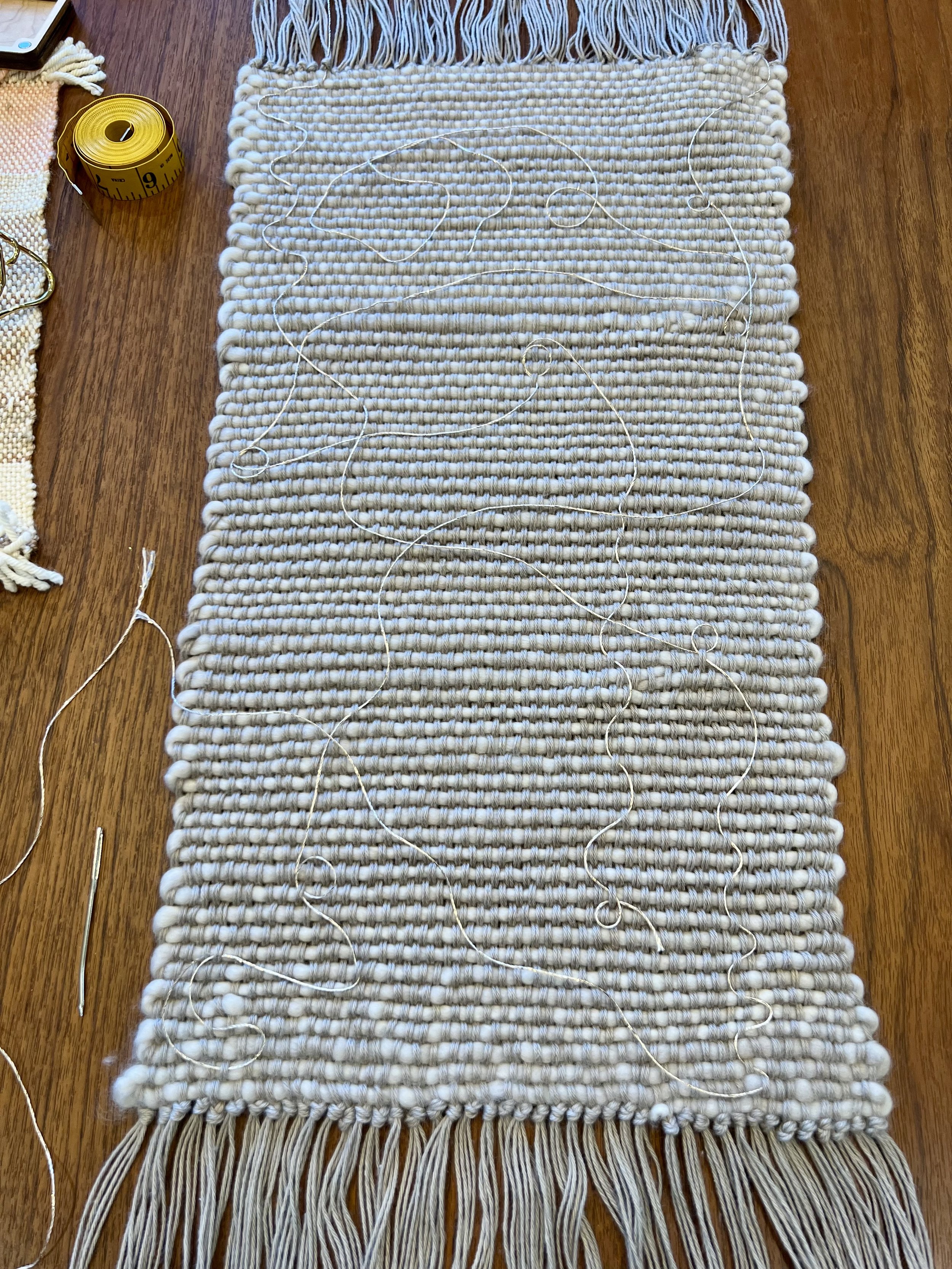






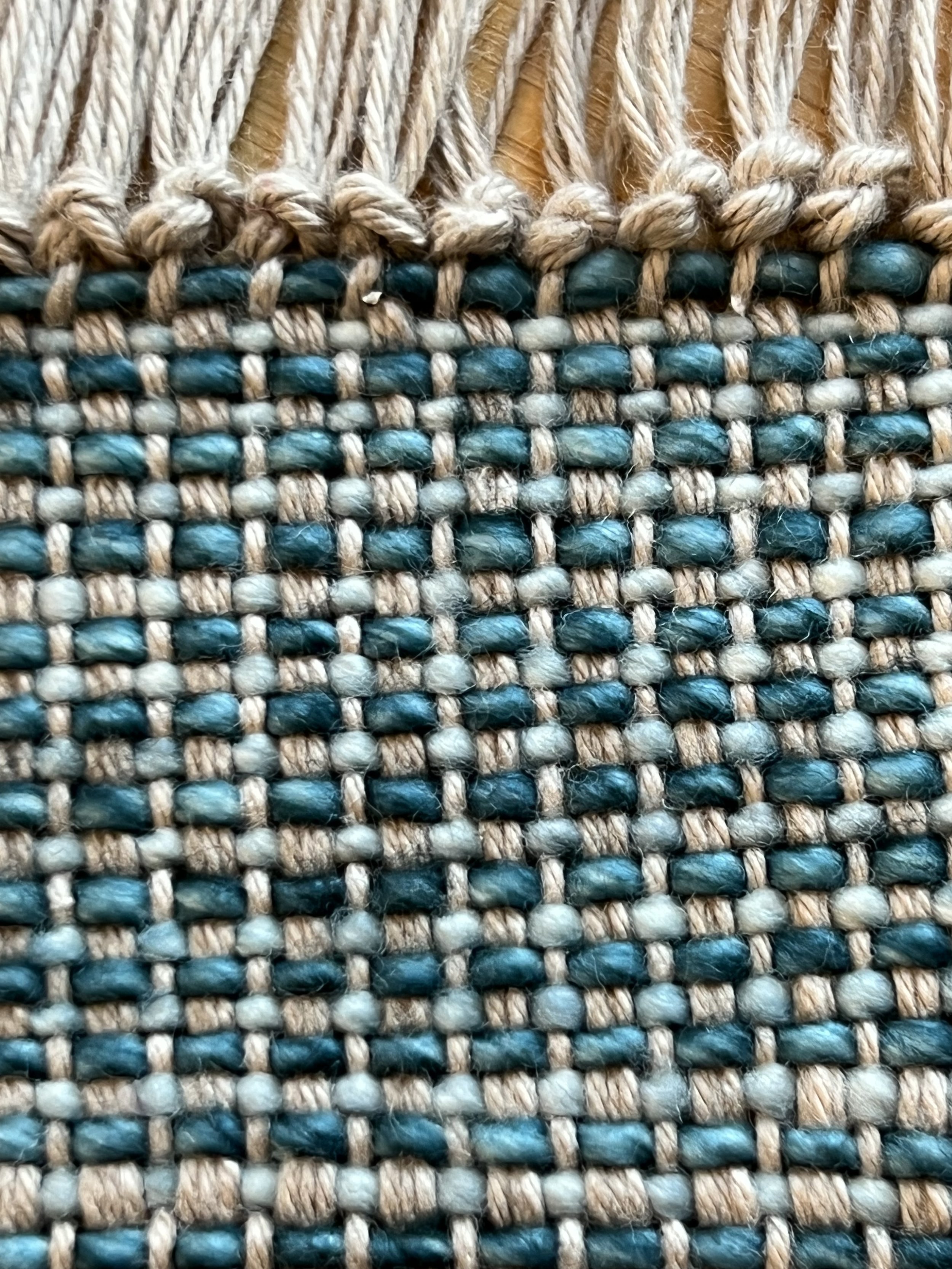

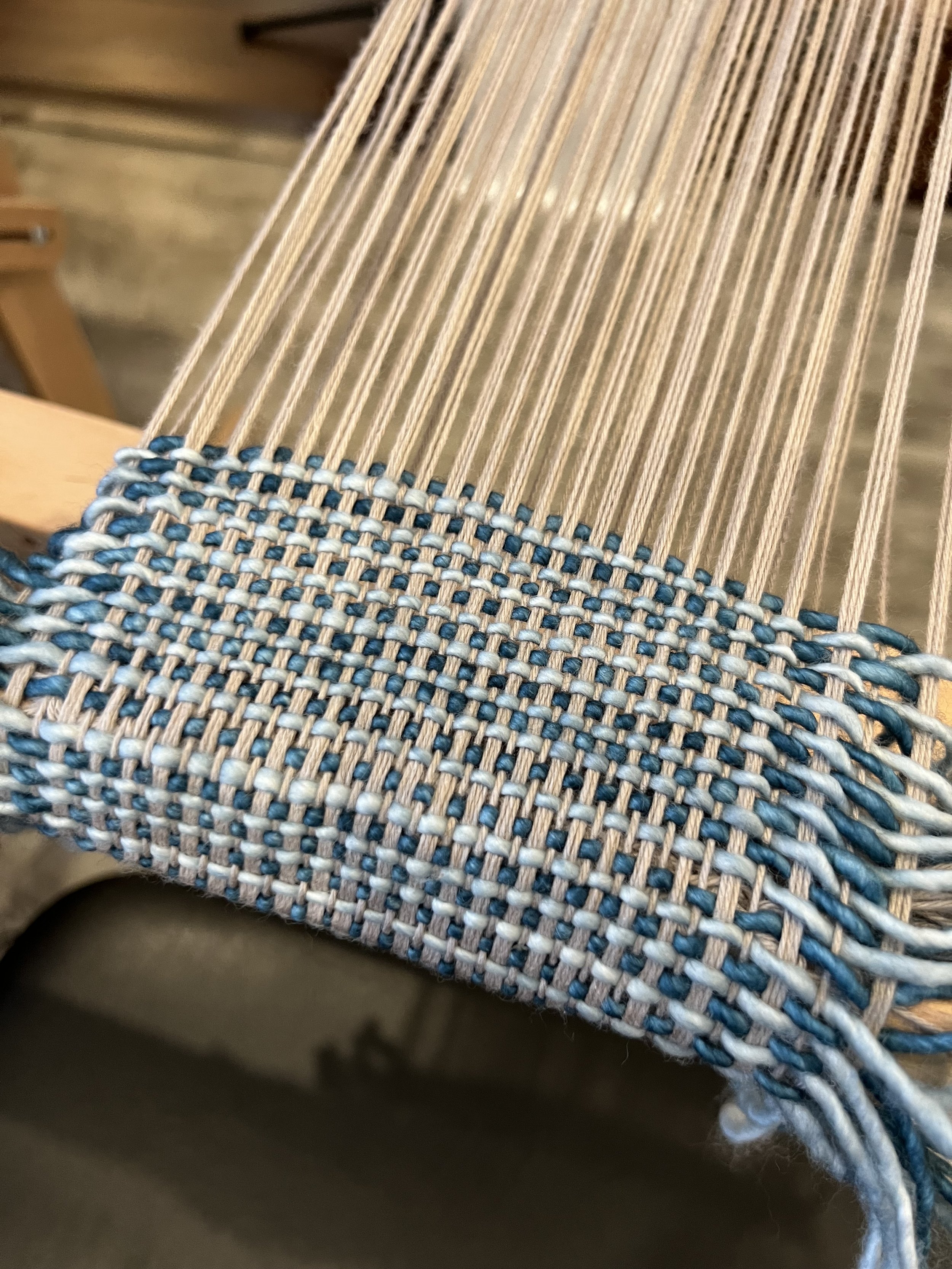
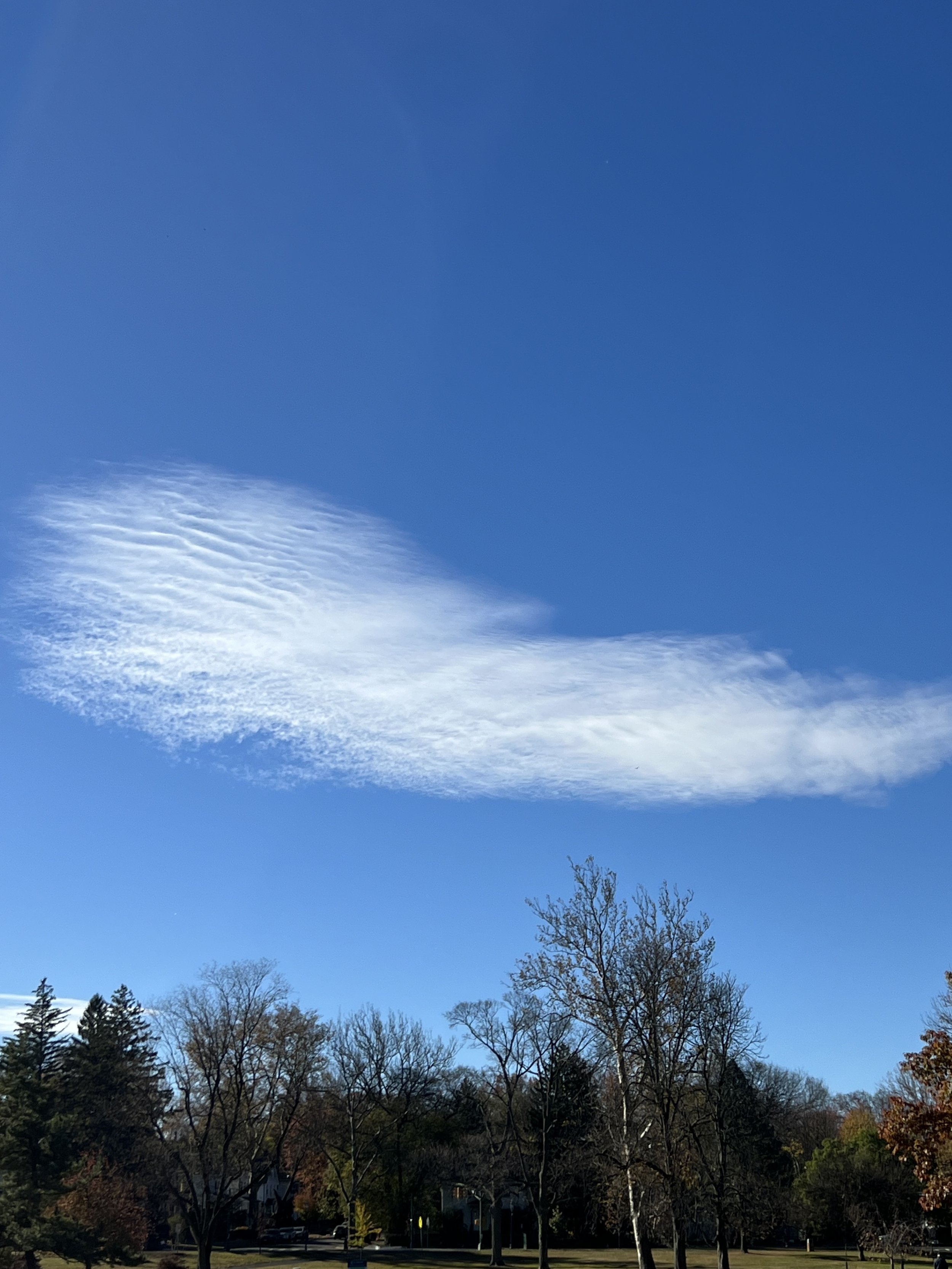




Study of Sky and Clouds Series, 2024-2025
Various yarns and sizes
Bulky Merino, Dorset, hand dyed Worsted, and textured bulky wool, cotton, metallic thread, and vintage knitting needles
When the garden slows down, the air is colder and the days are shorter. A new season brings gorgeous skies. The series is about looking up to study the sky while weaving inside, and moving/exercising outside during the cold months.
I’m weaving with a mix of yarns weights from different small shops I’ve been lucky to discover in Philadelphia, NJ, and NYC. For lovely clouds, the bulkier the yarn, the better.



Summer Nights, 2024
Wool and metallic cord, vintage knitting needle
I wove Summer Nights using a frame loom during the late spring/summer since the weather was nice and the frame loom is an easy loom to move around.
The colors are cirrus gray and metallic ecru. I allowed large ares of open space in between warp and weft. The idea was to weave the essence of a cool summer night - smooth and breezy with a chance to look up at the sky… the stars. The metallic cord is also a reference to fireflies. We call them cucubanos in Puerto Rico. Fireflies were one of the first things we noticed in the new garden when we moved almost six years ago.





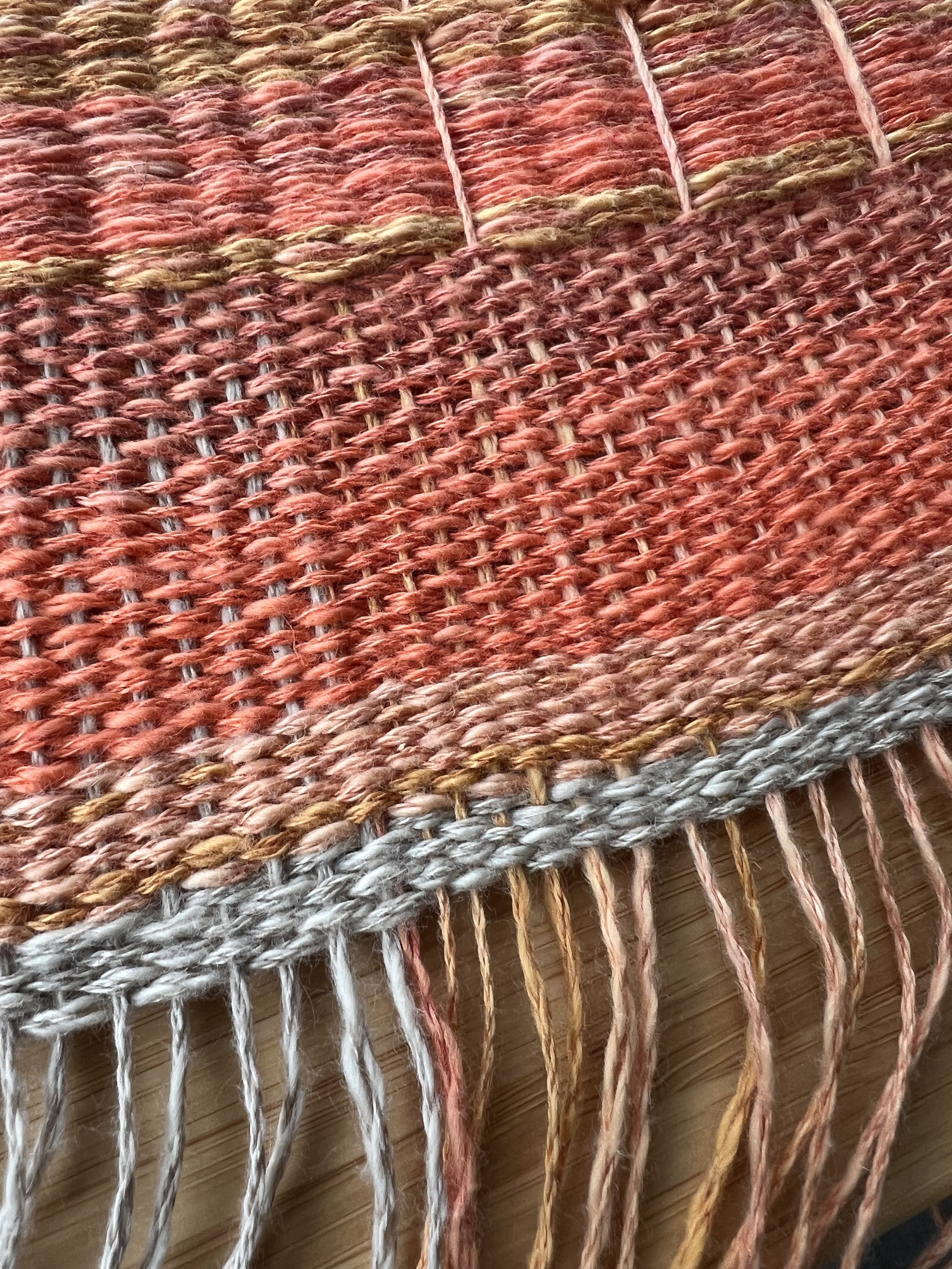

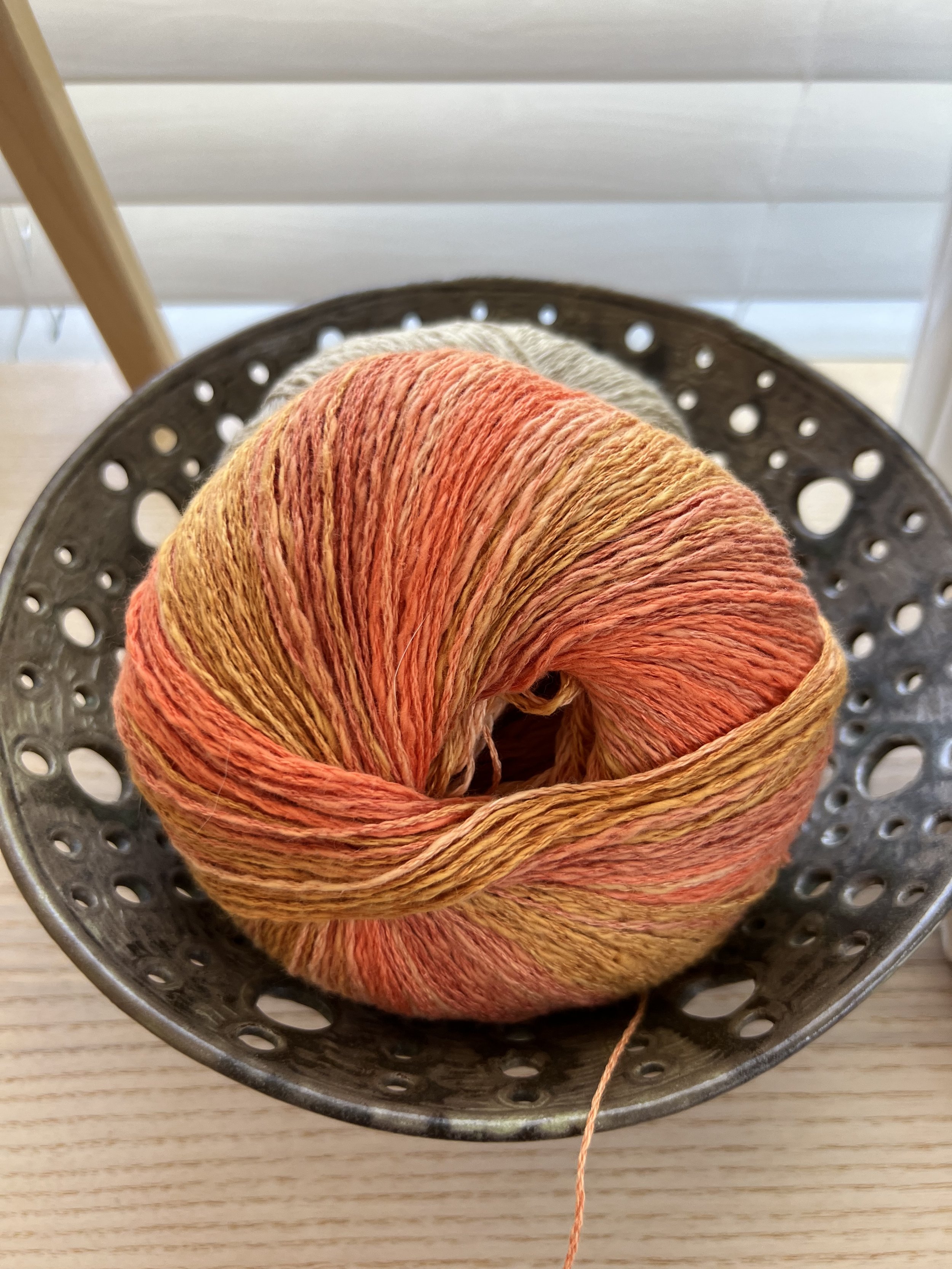

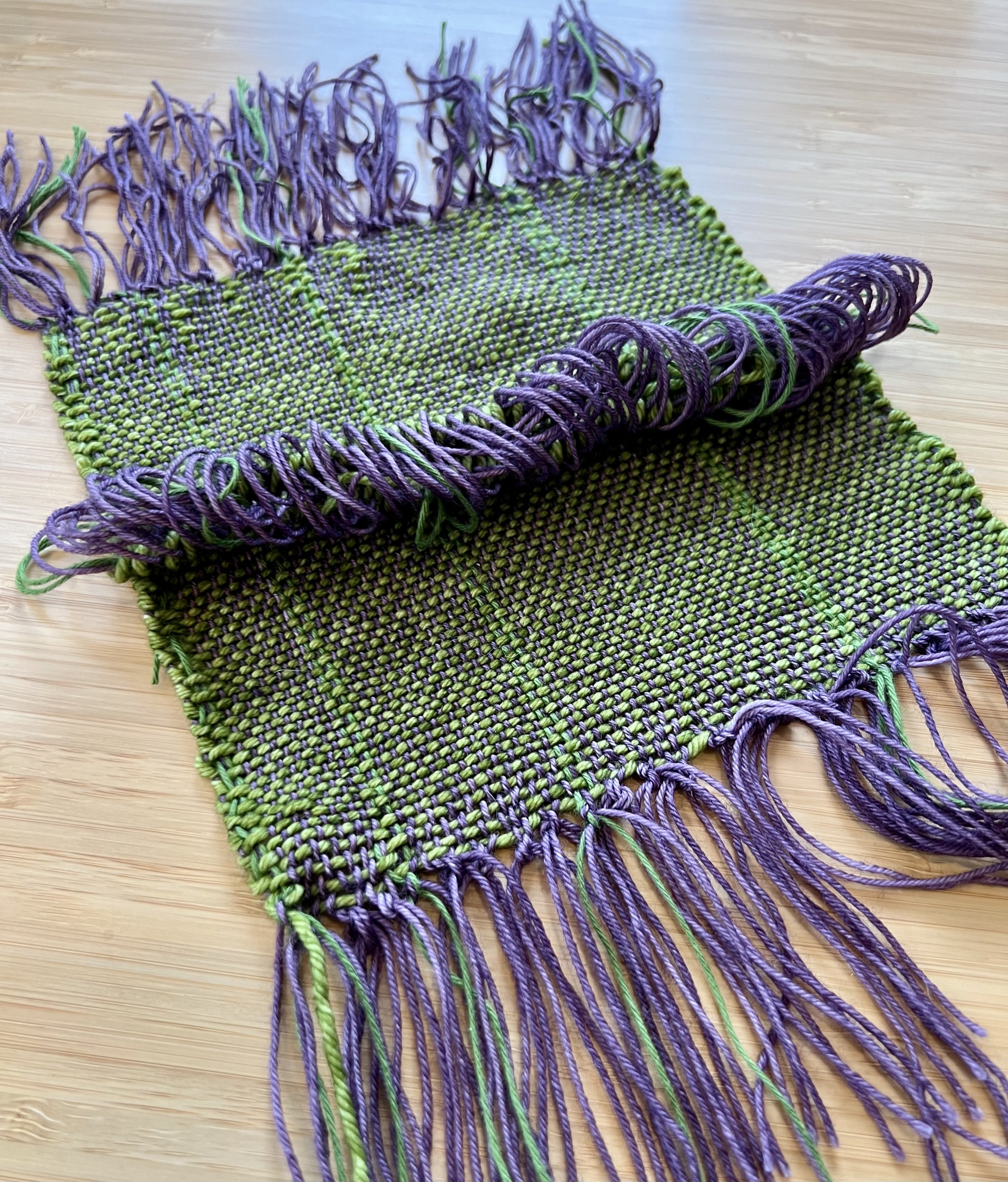
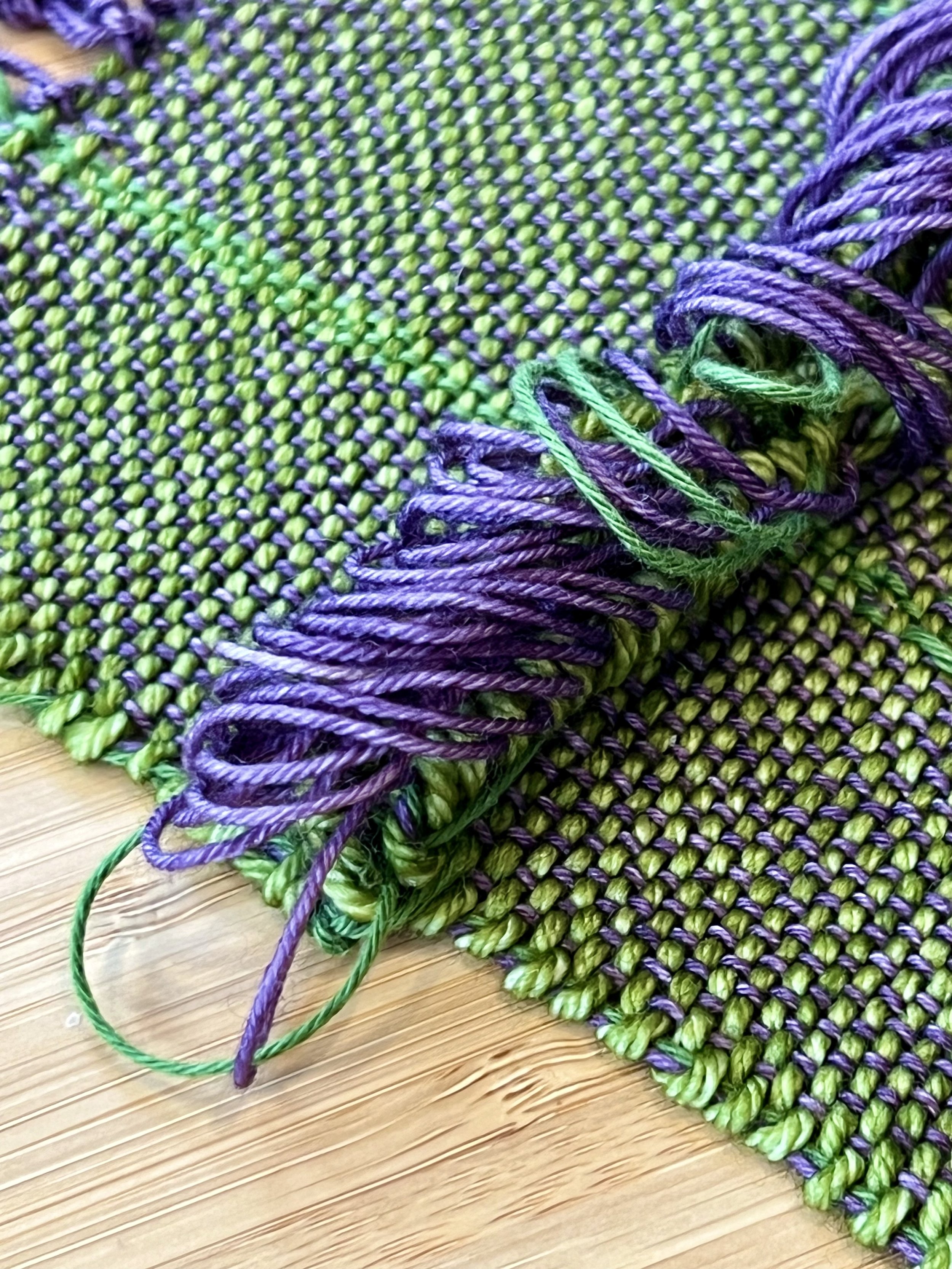





Seed Library, 2023-2024
Cotton, linen and wool yarns
Thinking of seeds and the garden brought me to start this series of textiles a few years ago entitled, Seed Library. This is an ongoing series as all the textiles are based on real plants grown in the garden.
I keep a seed library in my studio. I enjoy the details about the packets - the illustrations, information, and mostly that in such a small envelope, there’s a lot of hope inside. Similar to weaving, it takes time and attention to detail to grow seeds in the garden.
For these small textiles, I’m using vintage wooden knitting needles as a hanging finish. The vintage knitting needles have a history. I fell in love with them when I found them at a thrift store.
Over the last couple of years, I’ve noticed that some of the local public libraries have added a seed library. One can ‘check out’ seeds with the requirement that you bring back more seeds at the end of the season so others can grow things too. Seeds are great community connectors.








Part of my studio practice is to gather natural materials for dyeing yarn or to create inks for prints and drawings. For this project, I collected these beautiful and big seeds from the black walnut tree, a native and important tree to eastern North America. Its seeds are edible although I’ve never tried them. It’s easy to find the seeds in the fall while hiking on the ground and around the tree. I tried a variety of yarns. The nicest colors were the natural merino yarns and produced a gorgeous brown color.










Garden as Living Sculpture, 2019-present
Right before the pandemic, we moved to a 100-year old charming house across the river. Restoring this old house and land is an art project too. Every day, I’m reminded of how important was to plant that first seed in Brooklyn. It changed my awareness and intentions.
I describe my practice as inside and outside. My home and garden are one studio.





Rooftop Garden, 2009-2019, Brooklyn, NY
In 2009, I took the studio outside where movement, nutrition, and gardening became the focus of my practice.
The first seeds I used to create an urban garden were planted on our rooftop. One of the big reasons to start a garden was that our son was a baby and I wanted to show him where food came from. I grew vegetables, flowers, and herbs in containers for 10 years. I used the space to draw, move, collect seeds, and make homemade inks.

















Environmental School Project, 2022-2024
The goal of this environmental project was to restore the school’s green areas by removing invasive plants and planting native plugs/plants. The school already had a River Friendly certification due to its proximity to the river, and its science curriculum. We wanted to connect the school’s River Friendly certification to the green spaces by creating a habitat for pollinators, and a more sustainable garden in the school’s courtyard.
The creation of this naturally inclusive space gave the school’s community the opportunity to use it for a wide range of activities, and to learn about their local ecosystem, sustainable practices, and land history.
The first year we focused on removing invasive plants, weeds and garbage. Sadly, the courtyard had been used as a place to store broken items. There were also eight broken beds from a previous vegetable garden. We cleared the beds and removed the landscape fabric underneath the beds the best we could. Please don’t use this fabric in your gardens. It’s an awful material. We were able to define and establish an area for a pollinator garden.
At the same time, we began fundraising in collaboration with teachers. The project received two grants from a local foundation. There were also plant donations from parents and the community.
We planted natives and perennials with the incredible help of parent volunteers, teachers, staff and students. The second year was the busiest. We added more than 300 native and perennials plants and plugs. The students and teachers worked together through the gardening and mural clubs.
During the last year of my involvement in the garden, the focus was to maintain the planting by labelling, weeding, and watering the plants. Most importantly, the goal was to find a new group of parent volunteers to promote longevity to the new garden, and to continue supporting teachers that want to use the school’s courtyard as a classroom.


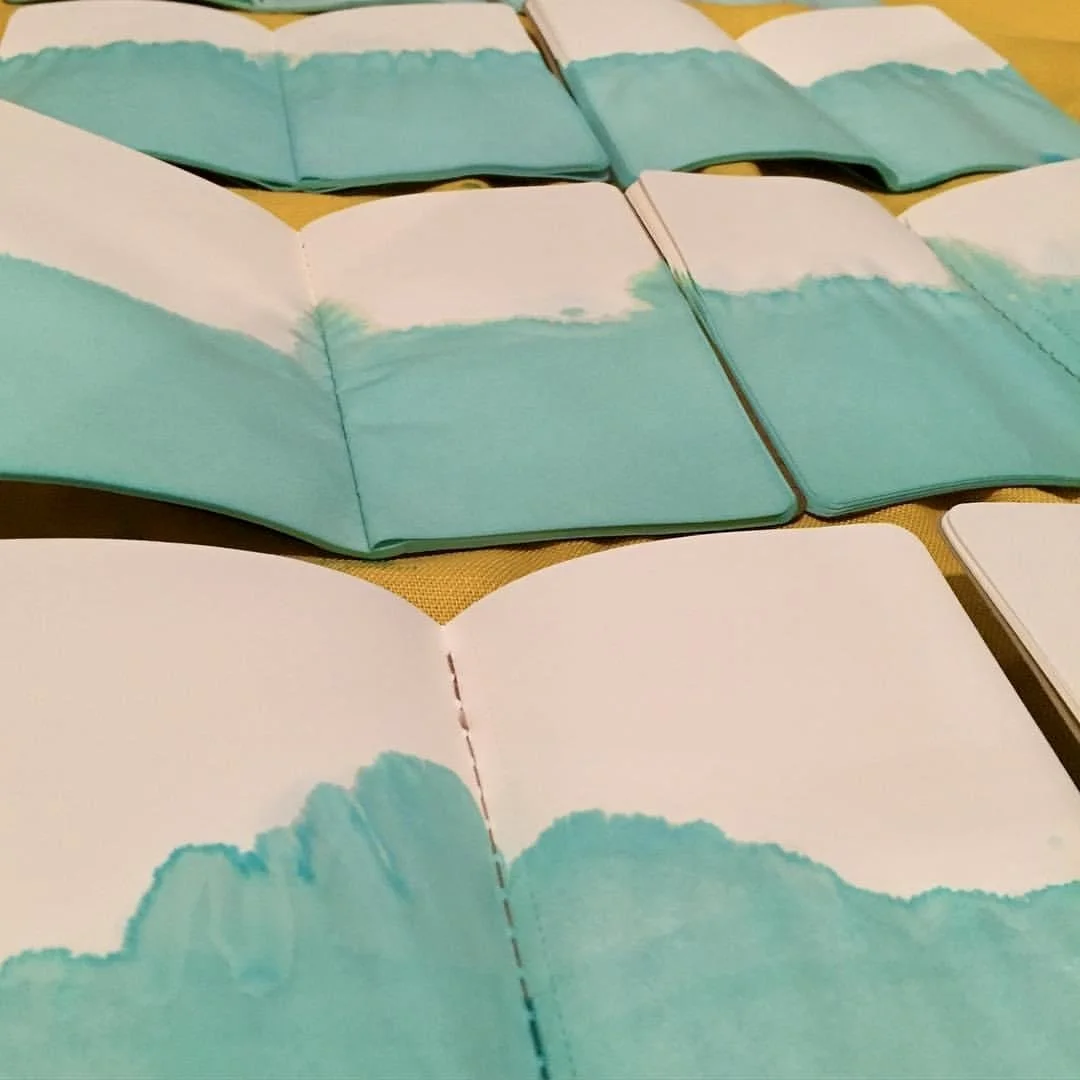
Follow the River, 2014-2015
Sketchbooks that were dipped in water with blue ink
The sketchbooks are installed in a long continuous horizontal line allowing the edges to touch. The installation gives viewers the opportunity to visualize a walk along the water by following the line's flow. The sketchbooks were made in two batches. Each sketchbook has a different blue and texture.





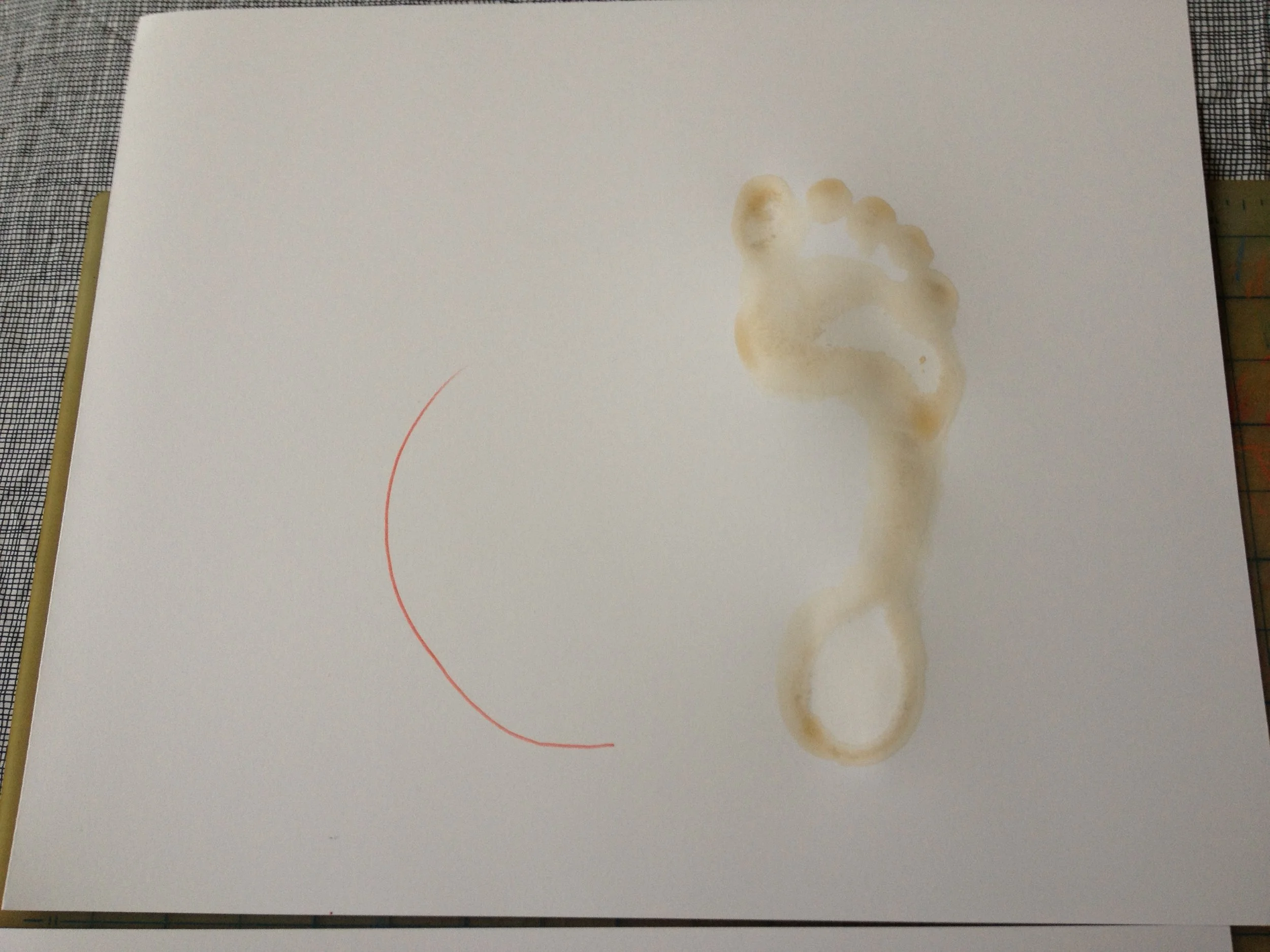



Between Two Lungs, 2013
Performance body monoprints
Beet ink on paper
14 x 17 inches
The series of monoprints for Between Two Lungs documents a one-person performance, and are related to the space inside one's body and how breath can be used as a tool to create space. For the monoprints, I used homemade ink from beets grown on my first version of the garden/studio, a small rooftop garden in Brooklyn, NY.








Tide, 2014
Three-person performance and exhibition at Ventana 244, Brooklyn, NY
Concept: Rossana Martinez
Performers: Bibi Calderaro, Julian Jackson, Rossana Martinez
Costumes: Black pants and shirts, iridescent copper fabric, bells
Documentation: Matthew Deleget & Melissa Staiger
Body Geometry (Take Me To That Other Place), 2014, archival pigment print, Edition of 5, 11 x 14 inches
One-person performance with mountain
Concept and Performer: Rossana Martinez
Costume: Black dress
Documentation: Matthew Deleget
Body Geometry, (Triangles), 2014, archival pigment print, Edition of 5, 11 x 14 inches
Two-person performance with skirts
Concept: Rossana Martinez
Performers: Bibi Calderaro and Rossana Martinez
Costume: Yellow and green skirts
Documentation: Matthew Deleget
Body Geometry, 2011, archival pigment print, Edition of 5, 11 x 14 inches
One-person performance
Concept and Performer: Rossana Martinez
Costume: Blue and hot pink fabric, orange clothing
Documentation: Matthew Deleget
See the World in Orange and Blue, 2011
One-person performance and site-specific installation at EFA Project Space, New York, NY
Concept and Performer: Rossana Martinez
Costume: Black clothing, orange and blue woodless colored pencils and paint, sketchbook
Documentation: Matthew Deleget
Where Soul Meets Body, 2007
One-person performance and site-specific installation at LMCC, New York, NY
Concept and Performer: Rossana Martinez
Costume: Orange clothing and paint, golden shoes
Documentation: Matthew Deleget
Heart on Fire, 2006
Two-person performance at Parc de Bruxelles Warande, Brussels, Belgium
Concept and Performers: Rossana Martinez & Matthew Deleget
Costumes: Red and orange clothing, running shoes
Documentation: Unknown viewer
Glow, 2006
One-person performance and site-specific installation at Hunter College/Times Square Galleries, New York, NY
Concept and Performer: Rossana Martinez
Costume: Black dress and shoes, fluorescent orange spray paint
Edition of 1,000, fluorescent orange spray paint on white paper, 4 x 6 inches each, stacked in the center of space and free to all visitors
Documentation: Matthew Deleget